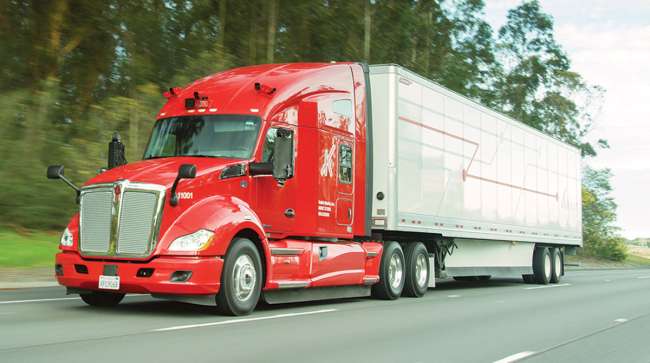Managing Editor, Features and Multimedia
Self-Driving Trucks: A Reality Check

[Stay on top of transportation news: Get TTNews in your inbox.]
No discussion of the future of the trucking industry is complete without considering the advance of automated driving technology, and how it might support the movement of freight in the years and decades ahead.
The vision of self-driving trucks hauling cargo on highways across the country already has taken root in the public imagination, but this topic elicits emotions ranging from excitement to trepidation, as well as stunningly divergent views on when, if ever, that vision will become a reality.
There are the true believers who see self-driving trucks as both imminent and transformational, as well as the skeptics who say it will never happen. But the most likely outcome lies between those two extremes.

Clevenger
To cut through the hype and paint a more realistic picture, let’s start with what we already know: more advanced driver-assist systems are coming soon to heavy-duty trucks.
Automated steering capabilities that already have appeared in passenger cars, such as lane departure protection and automatic lane centering, will soon become broadly available as an option in commercial trucks.
The rate of adoption for such features remains an open question, but it’s clear that onboard safety technology will do more to prevent crashes and support the driver in the future.
The convergence of automated braking, acceleration and steering, which together represent Level 2 automated driving as defined by SAE International, promises to enhance safety and make the job of the truck driver more comfortable and less stressful.
This type of driver-assist technology will be the most widespread application of automated driving in the trucking industry for a very long time.

Read more iTECH stories:
But as Level 2 automated trucks begin to emerge, a growing number of developers continue to make progress toward the next big step: Level 4. This is the stage at which trucks would truly begin to drive themselves. A Level 4 automated truck would be able to operate itself with no driver input, and no expectation that a driver would need to respond to a request to resume control — at least within the confines of certain routes, and when conditions are appropriate.
On-highway testing of self-driving truck prototypes is expanding, but for now, these vehicles still have drivers behind the wheel as a backup. Someday, drivers may be able to rest in the cab as these trucks operate autonomously. And several of the companies developing this technology aim to reach the point where the vehicle can haul freight with no driver onboard at all.
The technical challenges are significant, public acceptance will be paramount, and the exact timing is elusive, but as the years roll on, self-driving trucks will advance beyond the proof-of-concept phase and enter real-world freight operations in earnest. And yes, in some cases these trucks may eventually be unmanned. But what’s crucial to understand is that these unmanned trucks would be limited to specific use cases that are well suited to automation, such as industrial areas and designated hub-to-hub routes on open freeways. And these vehicles would represent only a very small percentage of trucks on the road for many years after their introduction.
Even freight operations that begin to incorporate unmanned trucks in the future would still rely on the flexibility and adaptability of traditional, human-piloted trucks to handle the more complex driving tasks associated with urban and regional routes.
WANT MORE NEWS? Listen to today's Daily Briefing
In other words, the emergence of highly automated trucks will supplement drivers, not replace them. In fact, as freight demand continues to grow, the trucking industry will need more professional drivers than it employs today, not fewer.
Especially when taking into account the industry’s ongoing struggle to recruit and retain drivers, it’s a safe bet that truck drivers will remain in high demand 10, 20 and even 30 years into the future. Expect the role of the driver to evolve along with the technology, but the job will still exist deep into the 21st century.
The promise of self-driving trucks is very real. Over time, this technology will save lives and improve freight efficiency and fleet productivity. But it will happen gradually. And professional drivers will be there every step of the way, for as long as we can reasonably foresee.




